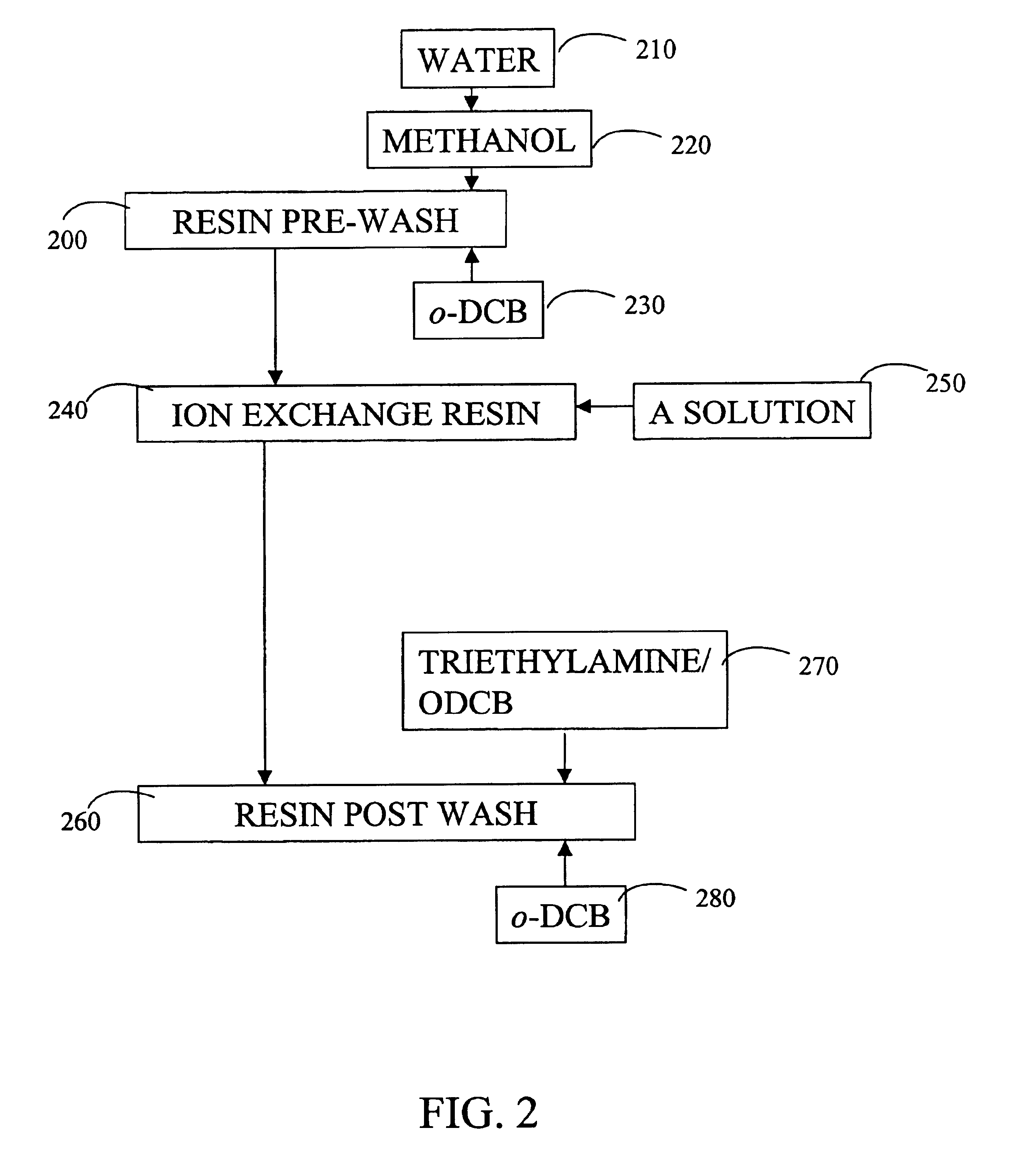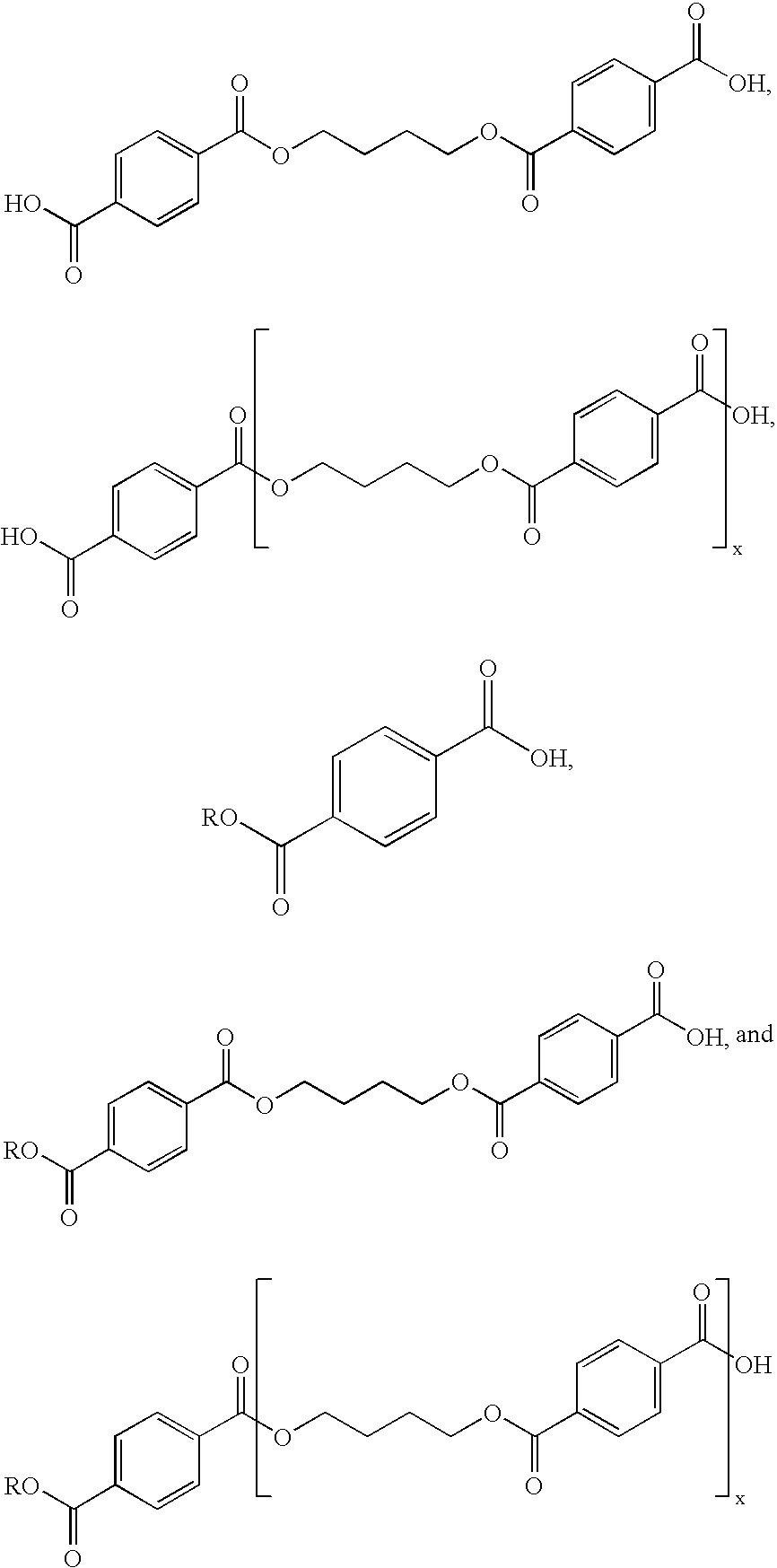Purification of macrocyclic oligoesters
a macrocyclic oligoester and purification method technology, applied in the direction cleaning/rinsing of ion exchange beds, chemical instruments and processes, etc., can solve the problems of ineffective and efficient way to regenerate molecular sieves, high cost of molecular sieves, and high production efficiency, so as to achieve convenient and convenient use, low cost, and high efficiency
- Summary
- Abstract
- Description
- Claims
- Application Information
AI Technical Summary
Benefits of technology
Problems solved by technology
Method used
Image
Examples
example 1
Removal of Acid Impurities from a CBT Solution Using Amberlite IRA-67
[0079]A 1 cm ID, 20 cm long jacketed column available from Ace Glass (Vineland, N.J.) was packed in water with 11.3 g of Amberlite IRA-67 ion exchange resin as received from Rohm & Haas (Philadelphia, Pa.). The ion exchange resin in the column was pre-washed. First, 100 mL of water was provided in the down flow direction. Then, 100 mL of methanol washed the column in the down flow direction to extract any water remaining on the resin. Finally, 100 mL of o-DCB was provided in the up flow direction until the volume of the o-DCB in the packed bed was 14 mL, and the ion exchange resin floated in the o-DCB.
[0080]A depolymerization reaction was conducted to provide a macrocyclic butylene terephthalate (CBT) solution by depolymerizing polyester linears. Insoluble polyester linears were precipitated from the reaction product solution by bringing the reaction product to 25° C. The insoluble linear polyesters were filtered f...
example 2
Regeneration of Clean Amberlite IRA-67
[0082]After breakthrough of acids described above in Example 1, the column and the ion exchange resin were post-washed to regenerate the ion exchange resin. The ion exchange resin was washed with 40 mL o-DCB in the down flow direction, sequentially followed by 40 mL of methanol, 40 mL of a solution of 3% NaOH in methanol, and 40 mL of methanol, all provided in the down flow direction. Finally, 40 mL of o-DCB was provided in the up flow direction.
example 3
Removal of Acid Impurities from a CBT Solution Using Regenerated Amberlite IRA-67
[0083]The solution described above in Example 1, containing 2.84% by weight macrocyclic oligoesters in o-DCB and 0.59 mmol / L of acid or 0.35 mol % acid based on macrocyclic oligoesters was passed through the regenerated column at about 25° C. and at an average flow rate of about 110 g / hour or 6 bed volumes / hour). The solution was passed through the bed for 24 hours at which point no breakthrough of acids was detected off the top of the column. The solution exiting the column was isolated on a Rotary Evaporator and evaluated for melt stability and the degree of polymerization, as described above in Example 1. The performance of the macrocyclic oligoesters purified with regenerated ion exchange resin was identical to the performance of the macrocyclic oligoesters that was purified with the new ion exchange resin as received from the manufacturer. For example, the isolated material was melt stable. When co...
PUM
| Property | Measurement | Unit |
|---|---|---|
| temperature | aaaaa | aaaaa |
| boiling point | aaaaa | aaaaa |
| temperature | aaaaa | aaaaa |
Abstract
Description
Claims
Application Information
 Login to View More
Login to View More - R&D
- Intellectual Property
- Life Sciences
- Materials
- Tech Scout
- Unparalleled Data Quality
- Higher Quality Content
- 60% Fewer Hallucinations
Browse by: Latest US Patents, China's latest patents, Technical Efficacy Thesaurus, Application Domain, Technology Topic, Popular Technical Reports.
© 2025 PatSnap. All rights reserved.Legal|Privacy policy|Modern Slavery Act Transparency Statement|Sitemap|About US| Contact US: help@patsnap.com



